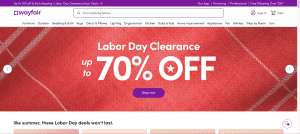In e-commerce, pricing is the critical factor that drives sales and competition. Retailers constantly adjust prices to outdo each other, resulting in fierce market dynamics.
This scenario poses challenges for suppliers who strive to maintain brand value and profitability. Minimum Advertised Price (MAP) monitoring becomes a crucial strategy for suppliers to manage this environment effectively.
This article explores what MAP is, why it’s essential, and how suppliers can monitor sellers to protect their profit margins.
What is MAP Monitoring?
The Minimum Advertised Price (MAP) is a policy set by manufacturers that establishes the lowest price at which retailers can advertise products. This policy is crucial for maintaining the brand’s value and ensuring fair competition among retailers.
For example, if a manufacturer sets a MAP of $150 for a pair of high-end sunglasses, all retailers must advertise this product for at least $150. They cannot promote it at a lower price, although they might sell it at a lower price in private communications or at the point of sale.
MAP policies are designed to prevent price erosion and protect the brand’s perceived value. Without such policies, retailers might engage in price wars, undercutting each other to attract more customers.
This could significantly reduce the product’s market value and harm the brand’s reputation. For instance, a retailer advertising the sunglasses at $150 would violate the MAP monitoring policy and potentially trigger other retailers to drop their prices, creating a downward spiral.
Significant online marketplaces like Amazon are particularly prone to MAP violations due to the highly competitive environment. Sellers on these platforms often lower their prices to gain a competitive edge, sometimes unknowingly breaching MAP agreements. This can harm suppliers relying on MAP policies to maintain pricing consistency across various sales channels.
Enforcing MAP policies helps suppliers ensure that their products are advertised at prices that reflect their value, preserving brand integrity and profitability. For example, a well-known electronics manufacturer might set a MAP for their latest smartphone model to prevent retailers from advertising it at a cut-rate price. This protects the brand’s premium image and supports smaller retailers who might struggle to compete with larger ones on price alone.
In summary, MAP policies are vital for manufacturers to control how their products are advertised, maintain a level playing field among retailers, and safeguard their brand’s reputation and profit margins.
Why Do E-commerce Suppliers Need MAP Monitoring
Minimum Advertised Price (MAP) policies play a crucial role in e-commerce by helping suppliers manage how their products are advertised. Understanding the importance of MAP monitoring can help suppliers maintain their brand’s integrity and profitability.
1. Uphold Brand Reputation
Uniform pricing reinforces a brand’s image. When prices for the same product vary significantly across different retailers, it can confuse customers and lead them to question the brand’s reliability and quality. For instance, if a high-end watch is advertised at $400 by one retailer and $250 by another, customers might doubt its authenticity or value. By enforcing MAP policies, suppliers ensure that their products are consistently priced, maintaining the perceived value and prestige of the brand. This consistency is crucial for luxury and premium brands, where brand perception directly impacts sales. Regular MAP monitoring helps prevent unauthorized price drops that could tarnish the brand’s reputation.
2. Promote Fair Competition
MAP policies ensure that all retailers, regardless of size, can compete equally. Without MAP, larger retailers might engage in aggressive discounting to attract more customers, pushing smaller retailers out of the market. For example, a small electronics store might struggle to compete if a big-box retailer advertises the same product at a much lower price. MAP monitoring policies prevent this by setting a floor price, ensuring smaller retailers can compete fairly. This leads to a healthier retail ecosystem where various sellers can thrive. Suppliers benefit from a broader distribution network and healthier relationships with all their retail partners.
3. Maintain Profit Margins
Enforcing MAP policies helps suppliers avoid price wars and maintain stable profit margins. In a highly competitive market, some retailers might drop prices drastically to boost sales, leading to a race to the bottom that erodes margins. For instance, if one retailer sells a popular gaming console at a deep discount, others may feel compelled to match or beat that price, squeezing profit margins across the board.
By adhering to MAP policies, suppliers can keep prices sustainable, ensuring that all parties in the supply chain maintain reasonable profits. This stability is crucial for long-term business health and planning. When margins are protected, suppliers can invest more confidently in marketing and product development.
4. Prevent Price Erosion
When one retailer lowers prices, others often follow, leading to widespread price drops. This can start a dangerous cycle of price erosion, where the perceived value of a product diminishes over time. For instance, if a retailer slashes the price of a premium kitchen appliance, it can prompt other retailers to do the same, ultimately harming the brand’s premium positioning.
Effective MAP monitoring helps prevent this domino effect by ensuring that all retailers adhere to the agreed-upon minimum price. This protects the product’s market value and prevents the brand from becoming associated with constant discounts. Suppliers can thus maintain a consistent pricing strategy that supports their brand image and market positioning.
How to Monitor Sellers and Prevent MAP Violations
MAP Monitoring sellers and preventing MAP violations is crucial for maintaining brand integrity and ensuring fair competition. Here’s a closer look at how suppliers can monitor compliance and protect their profit margins.
Establish a Regular MAP Monitoring Routine
Regularly checking retailers’ prices is essential to ensure compliance with MAP monitoring policies. This involves setting up a schedule to periodically review the advertised prices of your products across various online platforms. For example, suppliers might designate specific weekly days to audit prices on major e-commerce sites like Amazon, eBay, and Walmart.
This routine helps quickly identify any deviations from the MAP monitoring policy. A systematic monitoring approach ensures that no retailer slips through the cracks, maintaining pricing integrity across all channels. By catching violations early, suppliers can address issues promptly, preventing widespread price erosion.
Use Automated Price Monitoring Tools
Manual MAP monitoring can be highly labor-intensive and prone to errors, especially for suppliers managing various products. Automated price monitoring tools provide a more efficient solution by continuously scanning online listings for MAP compliance.
For instance, Pricefy’s software can track prices across hundreds of retailers in real time, sending instant alerts when MAP violations occur. These tools save time and resources, allowing suppliers to focus on other strategic tasks. Automation also ensures greater accuracy, reducing the risk of human error that can occur with manual monitoring. Additionally, detailed reports generated by these tools provide valuable insights into pricing trends and retailer compliance.
· Implement Automated Tools
Streamline the price monitoring process and reduce manual labor. Ensure the tool can track prices across multiple platforms and provide real-time alerts, like Pricefy.
· Set Up Real-Time Alerts
Quickly identify and address MAP violations. Look for features that offer instant notifications and easy integration with your workflow.
· Analyze Detailed Reports
Gain insights into pricing trends and retailer behavior. Reports should be comprehensive and easy to interpret, helping refine MAP enforcement strategies.
· Focus on Strategic Tasks
Automated monitoring frees up time for more critical business activities. Ensure that the tool’s efficiency translates into measurable productivity gains.
· Ensure Greater Accuracy
Minimize errors that can occur with manual monitoring. Get high accuracy rates in data collection and processing.
· Monitor Compliance Regularly
Maintain consistent pricing and uphold the brand value. Get regular updates and compliance tracking features.
Advantages of Automated MAP Monitoring
Automated MAP monitoring offers significant benefits over manual methods, enhancing the efficiency and effectiveness of price management. Here are the key advantages that automated tools provide for suppliers:
1. Efficiency:
Automated tools can monitor thousands of prices simultaneously, drastically reducing the time and effort required. This efficiency allows suppliers to allocate resources to other strategic tasks, enhancing overall productivity.
2. Accuracy:
Automation minimizes human error, ensuring the data collected is reliable and precise. This accuracy is crucial for maintaining consistent pricing and making informed business decisions.
3. Proactive Management:
Instant alerts enable suppliers to identify and address MAP violations quickly. Proactive management helps prevent extensive pricing issues and maintains the brand’s integrity across all sales channels.
Conclusion
MAP monitoring is essential for maintaining a fair and sustainable e-commerce environment. Suppliers can protect their brand reputation by enforcing MAP policies, ensuring fair competition, and sustaining profit margins.
Automated price monitoring tools, like those provided by Pricefy, offer an efficient way to track and enforce MAP policies, ensuring long-term success and stability for e-commerce businesses.




